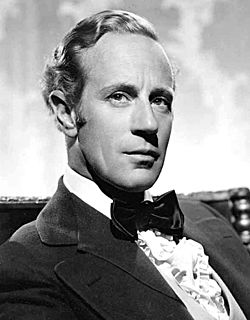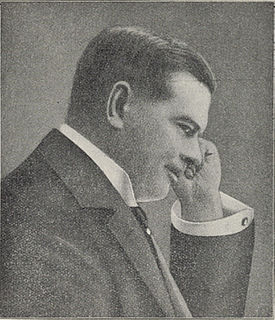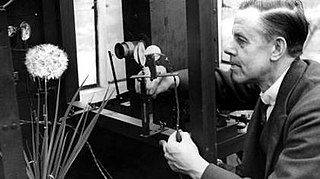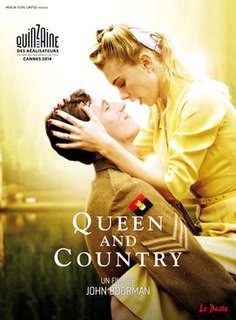Related Research Articles

The Dardanelles, also known as the Strait of Gallipoli from the Gallipoli peninsula or from Classical Antiquity as the Hellespont, is a narrow, natural strait and internationally significant waterway in northwestern Turkey that forms part of the continental boundary between Asia and Europe and separates Asian Turkey from European Turkey. Together with the Bosphorus, the Dardanelles forms the Turkish Straits.

War film is a film genre concerned with warfare, typically about naval, air, or land battles, with combat scenes central to the drama. It has been strongly associated with the 20th century. The fateful nature of battle scenes means that war films often end with them. Themes explored include combat, survival and escape, camaraderie between soldiers, sacrifice, the futility and inhumanity of battle, the effects of war on society, and the moral and human issues raised by war. War films are often categorized by their milieu, such as the Korean War; the most popular subject is the Second World War. The stories told may be fiction, historical drama, or biographical. Critics have noted similarities between the Western and the war film.

Why We Fight is a series of seven propaganda films produced by the US Department of War from 1942 to 1945, during World War II. It was originally written for American soldiers to help them understand why the United States was involved in the war, but US President Franklin Roosevelt ordered distribution for public viewing.

Leslie Howard Steiner was an English actor, director and producer. He also wrote many stories and articles for The New York Times, The New Yorker, and Vanity Fair and was one of the biggest box-office draws and movie idols of the 1930s.

The Scarlet Pimpernel is the first novel in a series of historical fiction by Baroness Orczy, published in 1905. It was written after her stage play of the same title enjoyed a long run in London, having opened in Nottingham in 1903.

A newsreel is a form of short documentary film, containing news stories and items of topical interest, that was prevalent between the 1910s and the mid 1970s. Typically presented in a cinema, newsreels were a source of current affairs, information, and entertainment for millions of moviegoers. Newsreels were typically exhibited preceding a feature film, but there were also dedicated newsreel theaters in many major cities in the 1930s and ’40s, and some large city cinemas also included a smaller theaterette where newsreels were screened continuously throughout the day.

Gallipoli is a 1981 Australian war drama film directed by Peter Weir and produced by Patricia Lovell and Robert Stigwood, starring Mel Gibson and Mark Lee. The film revolves around several young men from Western Australia who enlist in the Australian Army during the First World War. They are sent to the peninsula of Gallipoli in the Ottoman Empire, where they take part in the Gallipoli Campaign. During the course of the film, the young men slowly lose their innocence about the purpose of war. The climax of the film occurs on the Anzac battlefield at Gallipoli, depicting the futile attack at the Battle of the Nek on 7 August 1915. It modifies events for dramatic purpose and contains a number of significant historical inaccuracies.

Charles Urban was an Anglo-American film producer and distributor, and one of the most significant figures in British cinema before the First World War. He was a pioneer of the documentary, educational, propaganda and scientific film, as well as being the producer of the world's first successful motion picture colour system.

Oh, Mr Porter! is a 1937 British comedy film starring Will Hay with Moore Marriott and Graham Moffatt and directed by Marcel Varnel. While not Hay's commercially most successful, it is probably his best-known film to modern audiences. It is widely acclaimed as the best of Hay's work, and a classic of its genre. The film had its first public showing in November 1937 and went on general release on 3 January 1938. The plot of Oh, Mr Porter was loosely based on the Arnold Ridley play The Ghost Train. The title was taken from Oh! Mr Porter, a music hall song.

The Dardanelles operation was a failed assault by the British Royal Navy against the coastal fortifications of Constantinople. The operation was part of the Anglo-Turkish War.
The actuality film is a non-fiction film genre that, like the documentary film, uses footage of real events, places, and things. Unlike the documentaries, actuality films are not structured into a larger argument, picture of the phenomenon or coherent whole. In practice, actuality films preceded the emergence of the documentary. During the era of early cinema, actualities—usually lasting no more than a minute or two and usually assembled together into a program by an exhibitor—were just as popular and prominent as their fictional counterparts. The line between "fact" and "fiction" was not as sharply drawn in early cinema as it would become after the documentary came to serve as the predominant non-fiction filmmaking form. An actuality film is not like a newspaper article so much as it is like the still photograph that is published along with the article, with the major difference being that it moves. Apart from the traveling actuality genre, actuality is one film genre that remains strongly related to still photography.

The Battles of Lexington and Concord were the first military engagements of the American Revolutionary War. The battles were fought on April 19, 1775, in Middlesex County, Province of Massachusetts Bay, within the towns of Lexington, Concord, Lincoln, Menotomy, and Cambridge. They marked the outbreak of armed conflict between the Kingdom of Great Britain and its thirteen colonies in America.

The Lion Has Wings is a 1939 British, black-and-white, documentary-style, propaganda war film that was directed by Adrian Brunel, Brian Desmond Hurst, Alexander Korda and Michael Powell. The film was produced by London Film Productions and Alexander Korda Film Productions and 'was preparing the nation and shining a light on the power of the RAF'. The Lion Has Wings was made at the outbreak of World War II and was released to cinemas very quickly. It helped convince the British government of film's value for disseminating both propaganda and information.

King Solomon's Mines is a 1937 British adventure film directed by Robert Stevenson and starring Paul Robeson, Cedric Hardwicke, Anna Lee, John Loder and Roland Young. A film adaptation of the 1885 novel of the same name by Henry Rider Haggard, the film was produced by the Gaumont British Picture Corporation at Lime Grove Studios in Shepherd's Bush. Sets were designed by art director Alfred Junge. Of all the novel's adaptations, this film is considered to be the most faithful to the book.

The Scarlet Pimpernel is a 1934 British adventure film directed by Harold Young and starring Leslie Howard, Merle Oberon, and Raymond Massey. Based on the 1905 play by Baroness Orczy and Montagu Barstow and the classic 1905 adventure novel by Orczy, the film is about an eighteenth-century English aristocrat (Howard) who leads a double life, passing himself off as an effete aristocrat while engaged in a secret effort to rescue French nobles from Robespierre's Reign of Terror. The film was produced by Alexander Korda. Howard's portrayal of the title character is often considered the definitive portrayal of the role. In 1941, he played a similar role in "'Pimpernel' Smith" but this time set in pre-WWII Germany.

The Hero of the Dardanelles is a 1915 Australian film directed by Alfred Rolfe, made as a patriotic war recruiting film.

Frank Percy Smith was a British naturalist and early nature documentary pioneer working for Charles Urban, where he pioneered the use of time-lapse and microcinematography.
Secrets of Nature was a 1922–1933 British short black-and-white documentary film series, consisting of 144 films produced by British Instructional Films, which filmmaker, historian and critic Paul Rotha described in 1930 as "the sheet anchor of the British film industry".
This Land Belongs to the Army is a 2014 documentary film by Indian journalist and filmmaker Maga.Tamizh Prabhagaran. This film shows Sri Lankan civil war and shows the current post-war status of Sri Lanka. It also shows several controversial acts by the Sri Lankan government and the armed forces including Sinhalization and Land grabbing by the military. The film also features new testimonies from Tamil victims and an exclusive interview with a who is said to be a Sri Lankan Army officer, who speaks about the use of chemical and heavy weapons during the civil war.

Queen and Country is a 2014 British drama film written and directed by John Boorman. It was screened at the Directors' Fortnight section of the 2014 Cannes Film Festival. The film is a sequel to Boorman's Hope and Glory (1987), and features several of the same characters, although, because of the passage of time, David Hayman is the only actor from the first film to reprise his role.